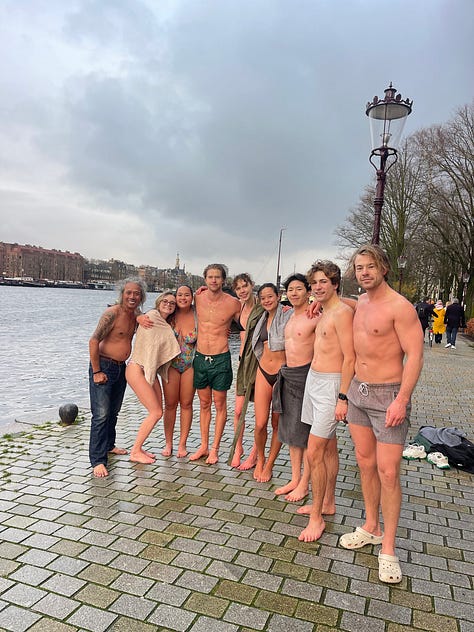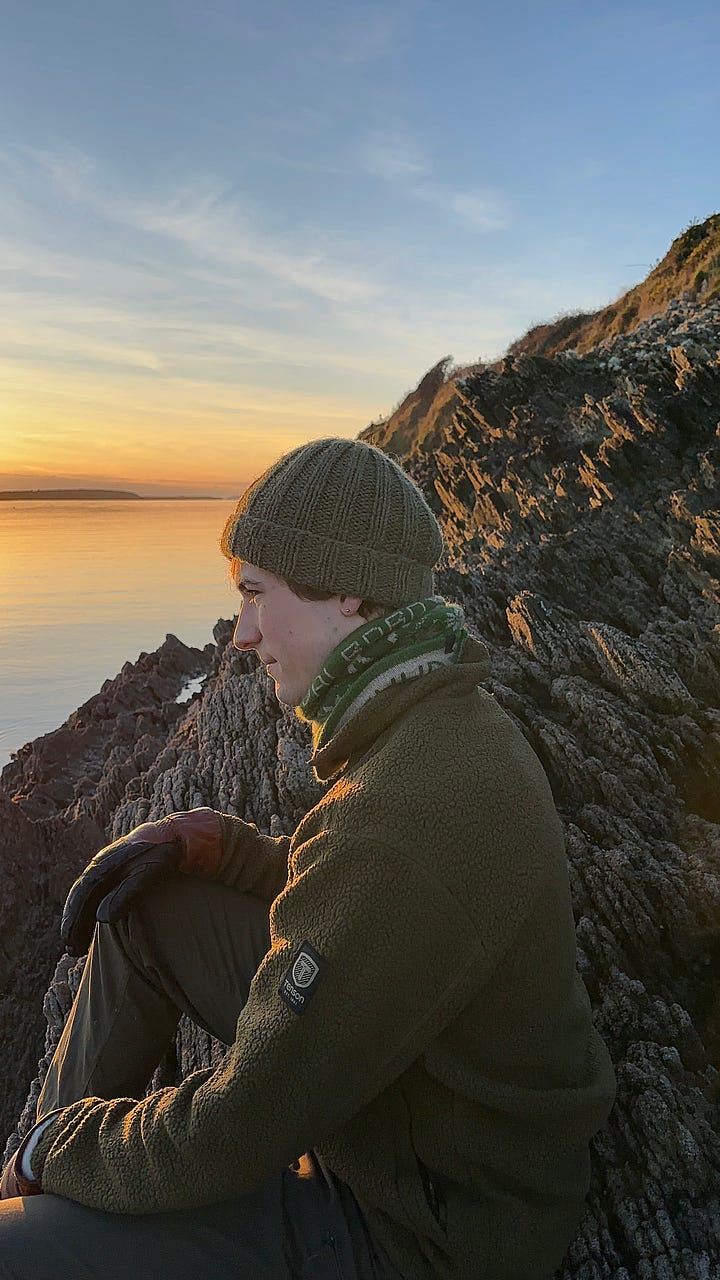New Year, Carbon Neutral Goals 🌍👣 - Fionn's Green Journey
Hey there, eco-champions! 🌱
Welcome to 2025! This month, I’m diving into the realities of carbon offsetting and sharing how I’m starting the year with a clean slate (literally—more on that below!). Let’s kick off the new year by tackling emissions, embracing fresh goals, and finding joy in the little things. 🌟
Carbon Offsetting: What You Need to Know 🌳✨
Did you know this newsletter emits about 2.95 kg of CO2e per edition? It might not sound like much, but when combined with all my digital activities—Instagram Reels, emails, and more—it adds up. This is one of the may things I learned from a recent carbon footprint analysis conducted by Atlas Project on my life. They made a very detailed analysis and a list of actionable steps to reduce my footprint.
See the full report here 😬.
Thankfully, my 2024 digital footprint has been fully offset as a donation from the wonderful team at Atlas Project. Going forward, I’ll be offsetting this newsletter myself, planting one tree per edition and tracking our growing digital forest.
But what does offsetting really mean? Here’s what I’ve learned—and what to watch out for:
The Real Deal: What Works and Why 🌱
Verification is Key
Not all offset projects are created equal. Credible projects are certified by standards like the Gold Standard, Verified Carbon Standard (Verra), or the Climate Action Reserve, which ensure projects meet stringent criteria for transparency, permanence, and additionality.
Additionality is crucial—it ensures the carbon reductions wouldn’t have happened without the project. For example, a wind farm replacing coal in a developing region might qualify, but a project in a region already rich in renewable energy might not.
According to a 2022 analysis by Bloomberg, over 90% of voluntary carbon credits from certain forestry projects lacked true additionality or risked overstating their carbon capture. This highlights the importance of thoroughly vetting offset providers.
Local Impact
High-quality projects often have benefits beyond carbon reduction. For instance:Mangrove restoration: Mangroves absorb up to four times more carbon than terrestrial forests and protect coastal communities from flooding and erosion.
Cookstove initiatives: Providing efficient cookstoves reduces deforestation and improves health by cutting harmful indoor air pollution.
A study in Nature Climate Change emphasizes that local buy-in and community benefits dramatically increase a project’s success. When communities are involved, they’re more likely to maintain projects over the long term.
Transparency
Projects that openly share details—such as geolocated coordinates, project methodologies, and measurable outcomes—foster trust. Atlas Project, for example, provides GPS coordinates and photos for every tree planted. This isn’t just marketing fluff; it’s a growing trend toward traceable impact in carbon markets.
As transparency becomes a key demand, startups like Pachama are leveraging satellite imagery and AI to monitor forests and verify offsets. Such innovations are critical to holding projects accountable.
The Hidden Nuances: Proceed with Caution 🚨
Too Cheap to Be True? I was shocked at how affordable some offsets are—like less than €1 for a flight. Does this really deliver impact? Be wary of feel-good solutions that lack verification. Sasha Higham, Atlas Project cofounder said:
“Carbon offsetting is surprisingly affordable due to efficient practices, economies of scale and community involvement. A few euros can plant a tree that, with proper care, absorbs carbon for decades. It’s proof that impactful action doesn’t always have to come with a big price tag—just ensure the project is verified for real results.”
Tree Timeframes: Trees are vital for carbon offsetting, but they don’t provide immediate results. It can take 5-10 years for a tree to absorb significant carbon, and risks like disease, drought, or logging can undermine the effort.
Look for projects that emphasize long-term care and resilience. For example, the Buffelsdraai Landfill Site Community Reforestation Project in South Africa has demonstrated success through community involvement and sustained maintenance.
Pro Tip: Consider supporting projects that offer blue carbon solutions, such as restoring coastal wetlands. These habitats can sequester carbon more rapidly and securely than terrestrial forests.
Buzzwords: Be skeptical of labels like “carbon-neutral” or “net-zero” unless they’re backed by verified data.
Carbon offsetting is a valuable tool, but it’s not a cure-all. Experts emphasize that offsets must be paired with active emissions reductions for maximum impact.
Focus on reducing emissions at the source through energy efficiency, renewable energy adoption, and lifestyle changes.
Use offsets to balance emissions that are currently unavoidable.
By approaching offsetting with care, research, and a commitment to reductions, we can take meaningful steps toward sustainability, one edition, one tree, and one choice at a time. 🌍✨
What I’ve Been Up To in December 🎄🛠️
December was a mix of closing chapters and new beginnings:
Microplastic Momentum: Thanks to donations to The Green Journey Coalition, we’re starting lab work this year to further optimize our microplastic removal liquid. Exciting times ahead! 🌊🔬
Lab Farewell: I wrapped up my work in Edwin Otten’s lab at the University of Groningen, where I’ve spent the last 5.5 years. I’m reflecting on the incredible research and can’t wait to share more soon.
A Busy Move: Moving out of my apartment over Christmas was intense—I had no idea how much stuff I’d accumulated. But purging my life of unnecessary things was so freeing and also rewarding seeing them get a new life in new homes!
NYE in Berlin: I celebrated the new year with an unforgettable night in Berlin. A perfect way to send off 2024 and welcome 2025 with open arms. 🎆🎶








What’s Coming Up in January 🗓️
January is all about reflection and recharging:
Nature Time: I’m spending the month in Ireland, surrounded by the beautiful countryside. A highlight? Tackling The Big Gun hike in the McGillycuddy Reeks. 🏞️
Lab Goals: Tying up data from my last experiments in Groningen and diving into new work optimizing microplastic solutions.
Personal Goals: I’m focusing on activities that boost me—like hiking, working out, and spending more time outdoors. Shoutout to Amber and Key for the cozy clothes keeping me warm on these adventures!
Move to Zurich: End of the month I will be moving to Zurich to start a project in the group of Prof. Alexander Barnes at ETH. I am really excited to share my journey.
Random Things I’m Loving 🌟
Tool of the Month: I can’t recommend Fathom enough for recording and transcribing Zoom meetings. It makes notes and to-dos a breeze. Check it out here. 📝🎥
Song on Repeat: “Sun Sun Sun” by Nico Morano—the perfect vibe for a new dawn. 🎶☀️
Recipe of the Month: Creamy Coconutty Butter Beans with Roasted Tomatoes—simple, hearty, and oh-so-delicious. 🥥🍅
What I’m Reading: Never Let Me Go by Kazuo Ishiguro—a moving and thought-provoking read. 📖✨
Fitness Motivation: Huge thanks to Paulina Gamero for keeping me on track and energized. 💪🔥
A Green Goal for the Year 🌿
This year, I’m committing to mindful emissions—from the flights I take to the small daily decisions I make. Let’s inspire each other to embrace thoughtful, sustainable choices.
Peace, love, and a greener planet,
Fionn 🌊🌱
This edition of Fionn’s Green Journey is fully carbon offset, thanks to the amazing support from Atlas Project! Each tree emoji below represents a verified tree planted to offset our digital footprint.👣
🌟 This Month: A new avocado tree has taken root in Gulu District, Uganda! 🥑
Fionn’s Green Journey Forest
🌲 🌳 🌴 🌿 🥑
🌲 = White Fir, 🌳 = Black Ironwood, 🌴 = Indian Cedar, 🌿 = Red Mangrove, 🌺 = Pomegranate, 🍋 = Lemon tree, 🥑 = Avocado tree, 🥭 = Mango tree
Watch the forest grow with every edition. Feel free to request exact coordinates 🥾✨
